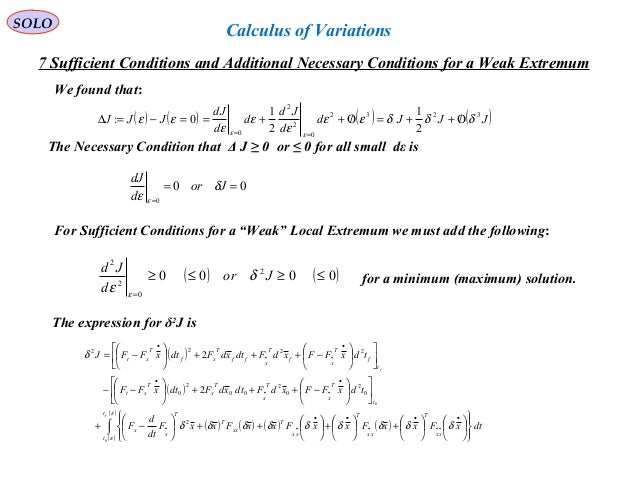
After Euler saw the 1755 work of the 19-year-old Lagrange, Euler dropped his own partly geometric approach in favor of Lagrange's purely analytic approach and renamed the subject the calculus of variations in his 1756 lecture Elementa Calculi Variationum.

Lagrange was influenced by Euler's work to contribute significantly to the theory. It immediately occupied the attention of Jakob Bernoulli and the Marquis de l'Hôpital, but Leonhard Euler first elaborated the subject, beginning in 1733. The calculus of variations may be said to begin with Newton's minimal resistance problem in 1687, followed by the brachistochrone curve problem raised by Johann Bernoulli (1696). Although such experiments are relatively easy to perform, their mathematical formulation is far from simple: there may be more than one locally minimizing surface, and they may have non-trivial topology. Plateau's problem requires finding a surface of minimal area that spans a given contour in space: a solution can often be found by dipping a frame in soapy water. Solutions of boundary value problems for the Laplace equation satisfy the Dirichlet's principle. Many important problems involve functions of several variables.

One corresponding concept in mechanics is the principle of least/stationary action. A related problem is posed by Fermat's principle: light follows the path of shortest optical length connecting two points, which depends upon the material of the medium. However, if the curve is constrained to lie on a surface in space, then the solution is less obvious, and possibly many solutions may exist. If there are no constraints, the solution is a straight line between the points. Functions that maximize or minimize functionals may be found using the Euler–Lagrange equation of the calculus of variations.Ī simple example of such a problem is to find the curve of shortest length connecting two points. Functionals are often expressed as definite integrals involving functions and their derivatives. The calculus of variations (or variational calculus) is a field of mathematical analysis that uses variations, which are small changes in functionsĪnd functionals, to find maxima and minima of functionals: mappings from a set of functions to the real numbers.


 0 kommentar(er)
0 kommentar(er)
